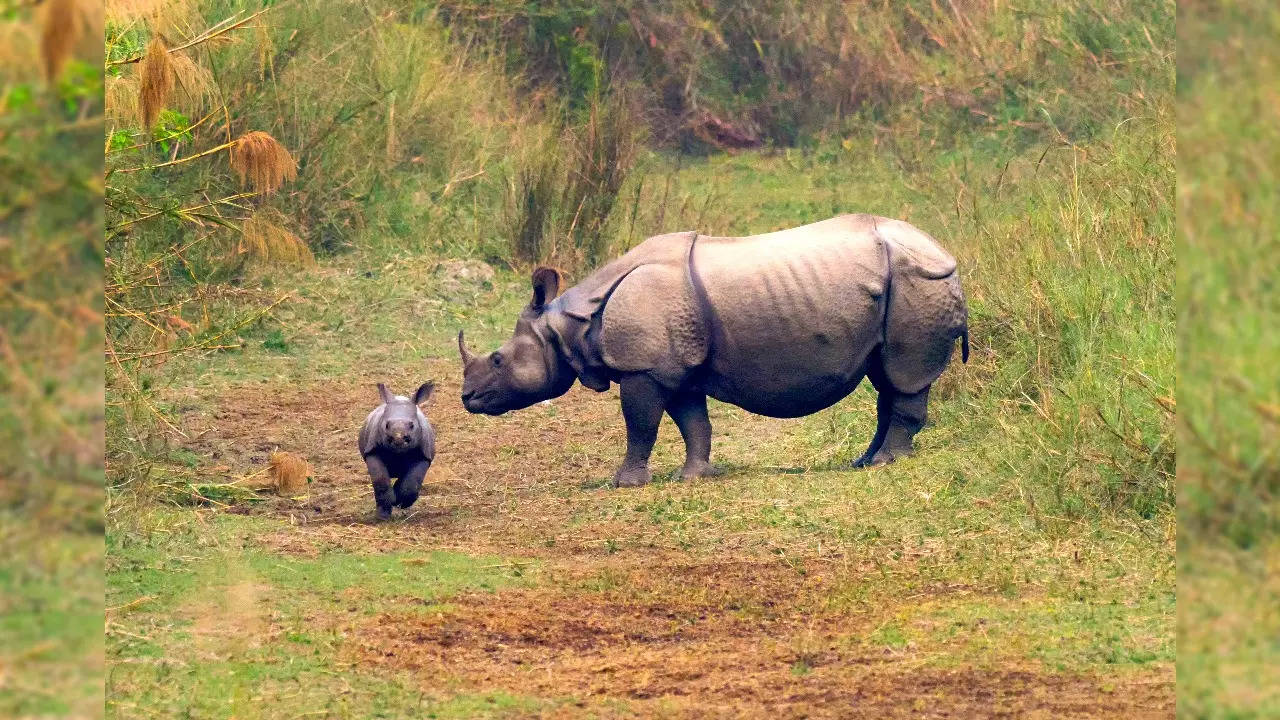World Rhino Day 2022: How India and Nepal increased the population of the one-horned rhino by 167 per cent
World Rhino Day: The recovery of the greater one-horned rhino is said to be among the greatest conservation success stories in Asia. According to the most recent report by the Asian Rhino Specialist Group (AsRSG), there are 4,014 greater one-horned rhino individuals, as per the biannual survey completed in early 2022. This is a whopping 167 per cent increase in the population of the one-horned rhinos since the 1980s.

The recovery of the greater one-horned rhino is said to be among the greatest conservation success stories in Asia.
Photo : iStock
It is World Rhino Day today (September 22) – a day marked to increase awareness on the conservation of these vulnerable ungulates. There are five rhino species and 11 subspecies across the world. The five rhino primary species are the greater one-horned rhino , Sumatran rhino, Javan rhino, black rhino and white rhino.
Rhino, which is an abbreviated form of the word ‘rhinoceroses’ comes from the Greek "rhino" (nose) and "ceros" (horn) and refer to the large, herbivorous mammals which are identified by their characteristic horned snouts.
The unicorn of wildlife
Of the five species, the greater one-horned rhino (Rhinoceros unicornis) is endemic to the Indian subcontinent and is found only in India, Nepal and Bhutan. Not too long ago this was the most vulnerable species of rhino. At the turn of the 20th Century there were barely 200 individuals remaining in the world.
The biggest victims of poaching and illegal wildlife trade, the one-horned rhinos were indiscriminately killed for their horn. The main markets have been in Vietnam and China, where traditional medicine uses rhino horn (even in the present day) as a party drug, health supplement and cure for gout, fever, arthritis, headaches, nausea and stomach disorders, anxiety, boils, infantile convulsions, food poisoning, and inflammation and infections. Some older Eastern medicine myths have claimed rhino horn is also effective in the treatment of hallucinations, snakebites and "demonic possessions". The sad saga of superstitions does not stop here. Many believers of the traditional Chinese and Vietnamese medicine further say that powdered rhino horn solution in water can cure cancer!
We use the word “superstitions” as even the practitioners of Traditional Chinese medicine (TCM) say that there is no scientific basis for such claims. Rhino horn is made of keratin — the same protein that makes up human nails and hair. So rhino horn should be as effective in curing ailments as chewing on your fingernails or hair should be. The World Federation of Chinese Medicine Societies has also issued a statement urging members not to use any other parts from endangered species.
The success story: Bringing the greater one-horned rhino from the brink of extinction
However, the concerted efforts by wildlife conservationists, governments and the global community have led to the spectacular recovery of the species from the brink of extinction in the wild. In fact, the recovery of the greater one-horned rhino is said to be among the greatest conservation success stories in Asia.
According to the most recent report by the Asian Rhino Specialist Group (AsRSG), there are 4,014 greater one-horned rhino individuals, as per the biannual survey completed in early 2022.
This is a whopping 167 per cent increase in the population of the one-horned rhinos since the 1980s.
According to AsRg — quoted in the State of Rhino Report brought out by International Rhino Foundation (IRF) — “The population is growing largely due to the governments of India and Nepal creating habitat for rhinos, while also preventing poaching.”
As per the report, the current population of greater one-horned rhinos in India is distributed across seven national parks. Kaziranga National Park (Assam) has 2613 individuals, Orang National Park (Assam) has 125, Pobitora Wildlife Sanctuary (Assam) has 107 rhinos, Manas National Park (Assam) has 40, Jaldapara National Park (West Bengal) has 287 individuals, Gorumara National Park (West Bengal) has 52 rhinos and Dudhwa National Park (Uttar Pradesh) has 38.
The State of the Rhino report, published every September, documents the current population estimates and trends, besides the challenges and conservation developments for the surviving rhino species in Africa and Asia.
Besides cracking down on poaching, the government has also worked on habitat management, in particular control of invasive species, according to the report. While Indian and Nepalese authorities are sharing best practices to control invasive species, programs in Indian national parks, including Kaziranga and Manas, are actively working to restore grasslands for the rhinos. This, the report says, is paramount to rhino recovery in India.
Trending:
End of Article
Subscribe to our daily Newsletter!





Related News





Tech Layoffs 2024: Experts Explain Why The Tech Industry Is Most Affected

Who Built NASA's James Webb Space Telescope?

Explained: What Is 60% Kannada Rule That Saw Violent Protests In Bengaluru

Disease X Versus COVID-19: What Are Similarities And Difference Between Two

Are We Prepared to Deal with Disease X?









